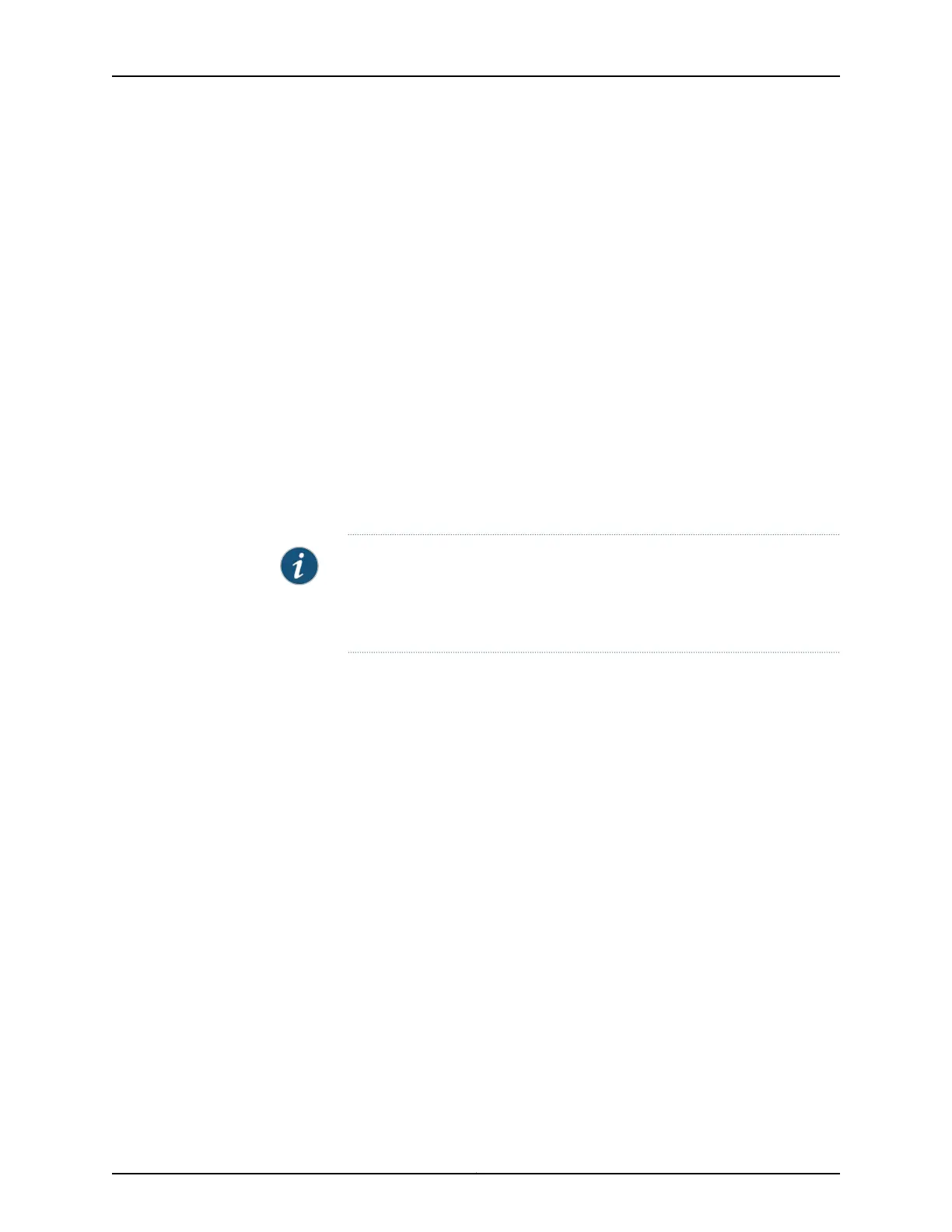The types of BA classifiers are based on which part of the incoming packet the classifier
examines:
•
DSCP, DSCP IPv6, or IP precedence—IP packet classification (Layer 3 headers)
•
MPLS EXP—MPLS packet classification (Layer 2 headers)
•
IEEE 802.1p—Packet classification (Layer 2 headers)
•
IEEE 802.1ad—Packet classification for IEEE 802.1ad formats (including DEI bit)
Unlike multifield classifiers (which are discussed in “Overview of Assigning Service Levels
to Packets Based on Multiple Packet Header Fields” on page 891), BA classifiers are based
on fixed-length fields, which makes them computationally more efficient than multifield
classifiers. For this reason, core devices are normally configured to perform BA
classification, because of the higher traffic volumes they handle.
In most cases, you need to rewrite a given marker (IP precedence, DSCP, IEEE 802.1p,
IEEE 802.1ad, or MPLS EXP settings) at the ingress node to accommodate BA
classification by core and egress devices. For more information about rewrite markers,
see Rewriting Packet Headers to Ensure Forwarding Behavior.
NOTE: If you apply an IEEE 802.1 classifier to a logical interface, this classifier
takes precedence and is not compatible with any other classifier type.
Classifiers for IP (DSCP or IP precedence) and MPLS (EXP) can coexist on a
logical interface if the hardware requirements are met.
For Juniper Networks M Series Multiservice Edge Routers, four classes can forward traffic
independently. For M320 Multiservice Edge Routers, T Series Core Routers, MX Series
3D Universal Edge Routers, and PTX Series Packet Transport Routers, eight classes can
forward traffic independently. If you carry more classes of traffic than the device can
forward independently, you must configure the additional classes to be aggregated into
one of the available classes. You use the BA classifier to configure class aggregation.
951Copyright © 2017, Juniper Networks, Inc.
Chapter 28: Configuring Behavior Aggregate Classifiers

